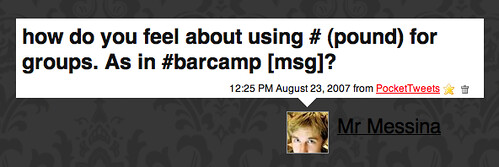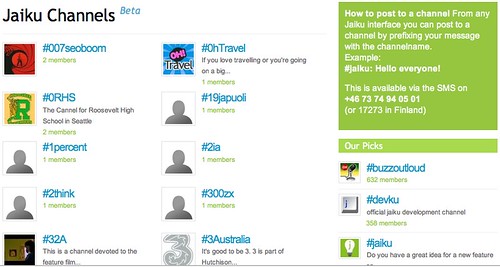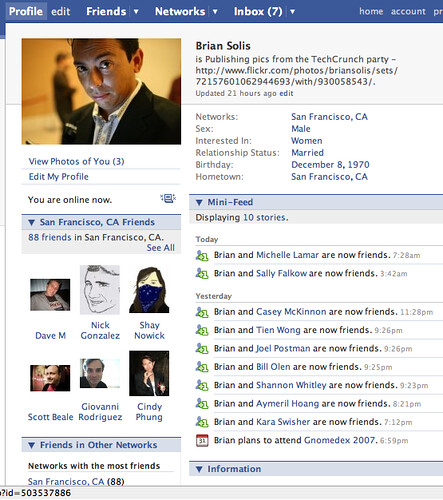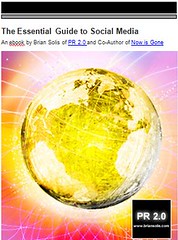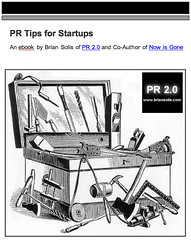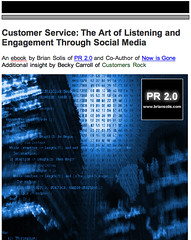Lifestreams Channel Online Activity, Creating Rivers of Relevance
Lifestreams are back in the spotlight again thanks to the most recent meme started by Steve Rubel, except this time, the popularity of flow, aka presence applications, such as Twitter, Pownce, Jaiku, and Tumblr is much greater and expansive than the last time the topic circulated the blogosphere.
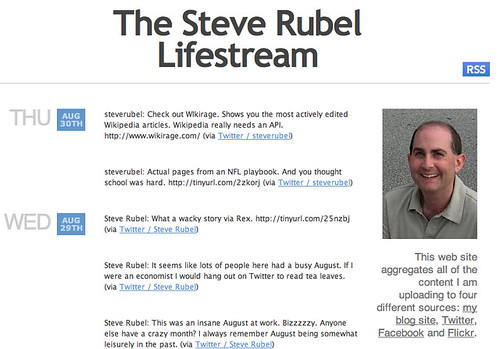
As the idea starts to move along the bell curve, people are realizing the potential for aggregating information and broadcasting a focused channel of relevant content - on both sides of the pipe.
I'm surprised however, that several folks new to the subject are actually taking or accepting credit for being among the first to launch dedicated lifestreams. The truth is that lifestreams aren't new at all. I've been writing about lifestreams and various platforms since 2006 and launched two separate experiments on Jaiku and Tumblr in early '07, and I'm sure there are other edglings who can document their evolution well before that.
Back in February 2007, Emily Chang explored a series of options for manually creating a solution for aggregating content into one data river, "After a year and a half of using social applications heavily, I recently had to revisit the plan to aggregate all my activity into one data stream... kept wishing I could look at all my social activity from 2006 in context: time, date, type of activity, location, memory, information interest, and so on. What was I bookmarking, blogging about, listening to, going to, and thinking about? I still had the urge to have an information and online activity mash-up that would allow me to discover my own patterns and to share my activity across the web in one chronological stream of data"
Her data stream is here.
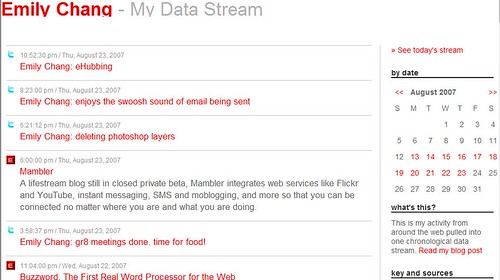
Jeremy Keith wrote about "Streaming His Life Away" in November 2006, which also served as inspiration to Emily, "I’ve mocked up my own little life stream, tracking my Twitter, Flickr, Del.icio.us, Last.fm, and blog posts. It’s a quick’n’dirty script that isn’t doing any caching. The important thing is that it’s keeping the context of the permalinks (song, link, photo, or blog post) and displaying them ordered by date and time."
Stowe Boyd had this to say about data streams in response to Emily's post, "...This traffic flow -- made more liquid by RSS and instant messaging style real-time messaging -- is the primary dynamic that I believe we will see in all future social apps. My sense is that small advances like Emily's single stream represent the inchoate and pent-up need for a traffic and flow model to crystallize, and change the web, fundamentally."
The difference today, however, is that the advantages of lifestreams are now more apparent in today's social economy, setting the stage for adoption among the early market majority. Tools are readily available today that can create dedicated lifestreams with zero programming required.
RSS is the riverbed for data streams. It enables people to not only subscribe to content, but also to common topics, ideas, and interests. And, microblogs aka flow applications, are the new platforms that facilitate the broadcast of these streams by anyone, for everyone.
Lifestreaming, in essence, is a site dedicated to collecting and publishing online activity - all in one place. In its most basic definition, lifestreams are information aggregators that funnel RSS feeds to create a concentrated river, stream, or flow of life represented through content.
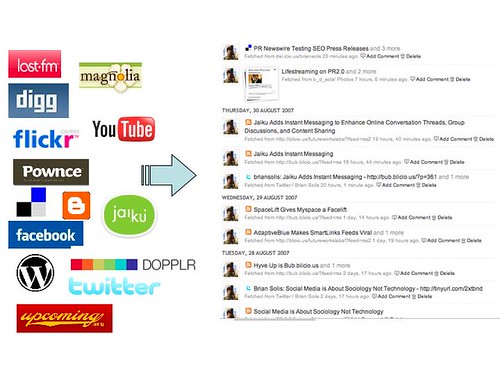
(c) Brian Solis
But it's much more than narcissism and the belief that our thoughts and activities are so important that we are required to publish everything we do for you to follow.
This is about communication. It's about people staying connected with each other in new ways that are radically different, but no less important, than the tools we used to keep in touch in the past. Remember, tools change...people don't.
This is an extension of traditional one-to-one conversations allowing people to become their own information broadcast networks.
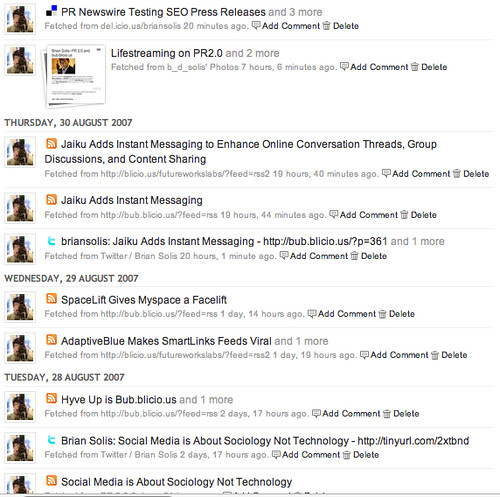
My lifestream on Jaiku
As discussed by several people over the last year, flow applications are also representative of something much more powerful than simple lifestreams.
The same technology can also create channels that broadcast ideas, topics, key words, tags, etc., creating a variety of streams that build channels around clusters of relevant information.
Steven Hodson of WinExtra is on the right track in his discussion on Ideastreams, "Currently tags are used as a link back to the Technorati service which allows you to see what other blogs out there might be using the same tag as a way to identify their posts...But they could very well form the basis of idea streaming if they were fully developed into a universal way to identify not just the topic or content of a post but also ideas or concepts brought about by the posts."
Tags are one way to do it right now, however the folksonomy of tagging is far from perfect. Not everybody tags things the same way and in some cases many tag things incorrectly (which is an entirely different subject for another time).
There's nothing stopping any person from creating topical or idea channels based on the power of people and day-to-day content review. For example, I am constantly reading about Social Media and therefore I could create and publish an idea or data stream based on the interesting things I find in social networks, blogs, and other online venues through a variety of social tools that will then send the filtered content to my platform of choice.
And aside from ideas, there are also incredible opportunities for data streams to connect people and communities together with flow.
For example, there are more and more companies, non profits, politicians, artists, and organizations participating in the world of Social Media everyday. They could each greatly benefit from collecting and broadcasting focused and comprehensive data streams to share activity with their community in ways that weren't before possible.
The most exciting thing here is that lifestreams are gaining traction, but they are just the start. The capabilities and implications of lifestreams and data streams are wide and varied, left only to the imagination and vision of people to define and build. The evolution of these streams will continue to change, enhance, and extend how people communicate with other people. And, it allows everyone to share so much more than just words. Lifestreams and data streams are windows into the activity, communities, ideas, content, beliefs, passions, words, thoughts, and topics that help define who we are.
Recent posts on lifestreams:
Rich Mahn
Dan York
Josh Bancroft
David Armano
Rex Hammock
Connect on Twitter, Jaiku, Pownce or Facebook.
twitter pownce tumblr tubmlelog lifestream datastream ideastream pr2.0 pr+2.0 pr 2.0 social+medial socialmedia social media media2.0 media+2.0 public+relations public relations data idea life stream emily+chang stowe+boyd steve+rubel


